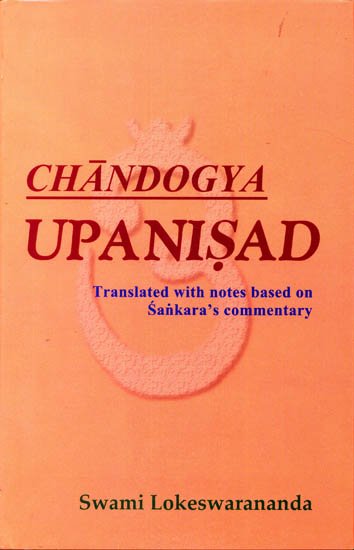Chandogya Upanishad (english Translation)
by Swami Lokeswarananda | 165,421 words | ISBN-10: 8185843910 | ISBN-13: 9788185843919
This is the English translation of the Chandogya-upanishad, including a commentary based on Swami Lokeswarananda’s weekly discourses; incorporating extracts from Shankara’s bhasya. The Chandogya Upanishad is a major Hindu philosophical text incorporated in the Sama Veda, and dealing with meditation and Brahman. This edition includes the Sanskrit t...
Verse 1.7.1
अथाध्यात्मं वागेवर्क्प्राणः साम तदेतदेतस्यामृच्यध्यूढं साम तस्मादृच्यध्यूढंसाम गीयते। वागेव सा प्राणोऽमस्तत्साम ॥ १.७.१ ॥
athādhyātmaṃ vāgevarkprāṇaḥ sāma tadetadetasyāmṛcyadhyūḍhaṃ sāma tasmādṛcyadhyūḍhaṃsāma gīyate| vāgeva sā prāṇo'mastatsāma || 1.7.1 ||
1. Now an explanation with reference to the body: Speech is Ṛk, and prāṇa is Sāma. This Sāma [called prāṇa] is based on the Ṛk [called speech]. This is why Sāma scholars sing songs based on the Ṛk. Speech is sā, and prāṇa is ama. Together they are Sāma.
Word-for-word explanation:
Atha adhyātmam, now what relates to the body; vāk eva ṛk, speech is Ṛk; prāṇaḥ sāma, prāṇa is Sāma; tat etat sāma, this Sāma [called prāṇa]; etasyām ṛci adhyūdham, is based on Ṛk [speech]; tasmāt, this is why; ṛci adhyūḍham sāma gīyate, the Sāma is sung as based on the Ṛk; vāk eva sā, speech is sā; prāṇaḥ amaḥ, prāṇa is ama; tat sāma, that [if joined together] is Sāma.
Commentary:
The word prāṇa means both the vital breath and the organ by which we smell. Physically, the organ of speech is below the organ of smell. Similarly, Sāma is known to be based on the Ṛk. In view of their respective positions, Ṛk is equated with speech, and Sāma is equated with prāṇa.
